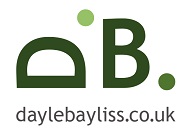-
Top 5 Tips for Making the Most of your Office Space
Dayle Bayliss talks to writer Les Pickford for the RICS Small Business Hub on the Top 5 Tips for Making the Most of your Office Space.
The full article can be found here.
From improving productivity to changing behaviours, Dayle Bayliss FRICS looks at how to squeeze extra value from changing your office layout.
1. How should your property link to your business strategy?
Your property needs should be driven by how you want your business to function. But don’t just think about what your business is trying to achieve, e.g. expand into different markets, consider how your staff are going to work in the future.
Will they need to be office-based or can they work from home or on-site? If you have fewer people in your property, how will they communicate, collaborate and share ideas? Do you need lots of formal meetings rooms? Or can most meetings be held in a café area?
Workplace design is changing and for many businesses it is becoming more informal. What would work for your business strategy?
2. What issues should you consider when planning your space?
A new space shouldn’t just be about the number of desks you need, it can be used to help change behaviours. For example, if your staff rely too much on emails to communicate, find a layout where it’s easy for staff to walk around and talk to each other.
But be aware that any changes to your space could affect what makes your business a success. For example, you might split your office layout into different sectors (e.g. project managers and designers in separate areas) or into teams (e.g. different skills on the same project sitting together). One way isn’t better than the other, but each approach will affect how your organisation operates.
Or if you want to reduce your space by introducing home working, think how this will affect how your staff work together.
A business will often think about changing its space because there’s a problem, but getting to the nub of the true problem is crucial. Are teams working in silos? Does your space layout hinder impromptu discussions? Having detailed and honest discussions about perceived problems might reveal some different underlying issues that need to be resolved first.
3. What’s the link between space, well-being and productivity?
If your staff are working in a well-designed environment, that’s appropriate to the organisation, their productivity should improve because they’re energised by their surroundings.
Space planning and design should be part of your wider business plan because it links your physical environment and organisational behaviour. If your property has a broken toilet, poor parking and there isn’t enough space for someone to work effectively then these things can create a poor environment that means you won’t get the best out of your staff.
And if you introduce major new processes but don’t redesign your space, this disconnection may mean staff will just revert back to their old ways.
4. What common mistakes do businesses make when planning their space?
Clients often find images of a property and say “We want ours to look like this.” They might want something very Google-ish without really understanding whether it’s how they want their organisation to be perceived and operate.
The design of Google’s offices alludes to its culture of innovation and flexibility – it’s difficult to imagine it having an office with magnolia walls and white-ceiling-tiles, but for many organisations that’s perfect for what they need. Not every business needs ‘think pods’ and a climbing wall.
Another example is that a community project might say “We want a shiny, new building.” But shiny, new buildings can be scary places for some people. By taking away the physical building they were once associated with, they risk losing part of what holds their community together. Be careful what you wish for.
If you want to make a property change successful, don’t underestimate the management effort needed, especially communication. It’s crucial to bring your staff along on your journey so they understand what you’re trying to achieve and how you’re planning to do it.
5. What’s your advice to somebody looking to review their space?
The reasons behind property changes are often vague, such as ‘to save money’ or ‘be more efficient’. But if you can’t truly explain your reasons in detail, how can you expect to fully communicate them to staff and get their buy-in? It’s important to really understand the reasons why you’re doing it and what you want to achieve. If you don’t know these, you’re unlikely to achieve success.
It’s also easy for a property change to become transactional, e.g. just make enough space for six more desks. But this may miss a great opportunity for change and not solve the real issue of why changing your space is actually needed. It takes skill to really probe into the reasons.
You can create an amazing space but it may not achieve what you want because the people haven’t changed how they work. Making the most of your space is really about understanding and influencing organisational behaviour. Space and people are intrinsically linked – it’s not just about a physical layout, it’s about your culture.
Dayle Bayliss works on a consultancy basis to work with business to look at their challenges and solve these with integration with design and built environment projects. For more information click here






